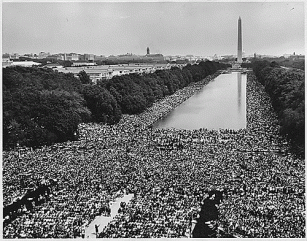Weekly Comment: by guest David L Griscomb, PhD
Sleuthing Stolen Election 2004:
John Brakey and the "Hack and Stack"
Presented at the American Association for the Advancement of Science (AAAS),
San Francisco, Feb 2007
Updated February 2007 from Version Originally Published in OpEdNews:
By David L. Griscom, Ph.D.
AAAS Program on "Sleuthing Stolen Election 2004
In the wee hours of 3 November 2004, the day after Election Day, the CNN.com website showed an updated exit poll which had Kerry leading Bush nationally by 2.6%. But soon thereafter the vote counting equipment reported Bush ahead of Kerry by almost the mirror image: 2.8%. Simon & Baiman
Never before had the U.S. national exit polls been so wrong …or WERE they?
On 11 November 2004, David Cobb and Michael Badnarik, the Green and Libertarian candidates for president, announced their intentions to file a formal demand for a recount of the ballots cast for president in the pivotal state of Ohio. This recount (conducted by Ohio SOS Kenneth Blackwell!) was officially terminated on 31 December 2005 after a recount of about 3% of the vote, which found 734 additional votes for Kerry and 449 additional votes for Bush.
Flash forward to 10 March 2006 the Associated Press told us that "[T]he third highest ranking employee at the Cuyahoga County Board of Elections has been indicted on charges of mishandling ballots during the 2004 presidential election recount."
And flash once more to 24 January 2007: Two election workers in Ohio's most populous county were convicted of illegally rigging the 2004 presidential election recount, allegedly so they could avoid a more thorough review of the votes.
So, what was the big deal about failing to randomly select precincts for recounting?
The answer lies in John Brakey's "Hack and Stack."
Let us return to Election Day 2004. John Brakey is going about his duties as Democratic Cluster Captain for four precincts in a heavily Hispanic, 80%-non-Republican district of Tucson, Arizona. When he entered these polling places to collect "tear sheets" (carbon copies of the record of the names of voters issued ballots) he was met with hostility by poll workers at three of them, and he observed irregular things going on at these three stations throughout the day.
Finally, more than an hour after the polls were closed, John returned to the Pct 324 polling place (his home precinct) where, to the mutual shock of all concerned, he stumbled upon the poll workers apparently in the process of altering the records. These workers cursed and menaced John until he withdrew [see p. 132 in Mark Crispin Miller's book, Fooled Again – How the Right Stole the 2004 Election & Why They'll Steal the Next One Too (Unless We Stop Them)].
Like the "mild mannered Clark Kent" who became Superman when "truth, justice, and the American way" needed defending, John had risen up in the past to successfully sue a company that had been cheating subcontractors in Tucson. And, given that part of the court-ordered settlement required him to become publicly silent on what he knew, he headed "south of the border" for 14 years, where before long he was butting heads with crooked Mexican politicians in his successful defense of the Gulf of California against over fishing by commercial interests.
Now flash back once again to the morning of 3 November 2004. John Brakey took a page from election-theft-sleuth Greg Palast and went back to the Pct 324 polling place to poke in the trash. What he recovered there were the "ballot information slips" (3x3" slips of paper used by poll workers to record each arriving voter's registration number, party affiliation, and whether or not required to vote a provisional ballot). But these particular slips proved to be replete with non-standard indexing notations not normally used by poll workers. It was a consecutive numbering scheme (including some "alternate" consecutive numbers!!!), which would have enabled these poll workers to reorder (or alter) all other Election Day records at their whim.
(Note: You can view every article as one long page if you sign up as an Advocate Member, or higher).





